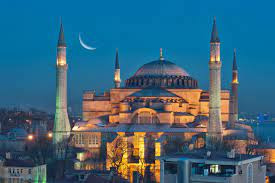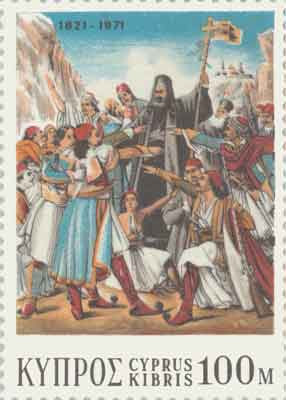Don't wanna be here? Send us removal request.
Text
Travel Log to The Ottoman Lands
The pilgrimage from Damascus to Jerusalem and Mecca
On my tiresome yet lucrative journey to Hajj, I learned a lot about the religion of Islam. Along my journey, I made a new friend named Abdulhakim. I learned a lot from him and we made some interesting discoveries. The main thing that I learned was that the Hajj pilgrimage is mandatory among all Muslims who are financially eligible. The Ottomans did a spectacular job at spreading the religion of Islam. People were expected to pray five times a day in the mosques built by the Ottomans. Friday prayers were encouraged to be prayed in mosques allowing groups of Muslims to gather weekly. All of the pilgrims would stop in the middle of our journey to pray the five mandatory prayers (sunrise through sunset). Mosques were provided in every town and city emphasizing the importance of practicing the religion of Islam. This was an effective way of making practicing the religion efficient for anyone at any time. This one tiresome, long trip from Damascus to Mecca was thankfully accompanied by Mehmed's forts built for the pilgrims travelling to the holy site. The formidable hajj complex consisted of forts, madrasas, and mosques. Abdulhakim, (meaning “servant of the All Wise” in Arabic), informed me that the Syrian route was used from the Mamluk period. This was an interesting fact as it helped me put things into perspective. Bedouin raids were very common and threatening in the pilgrimage. We all needed to be accompanied by security and safe shelter for a night's sleep for the Bedouins could raid at any time. Finally, we arrived in Mecca and at first, what appeared to be gold colored paint turned out to be real gold! Abdul informed me of this fact and explained why. I was incredibly shocked by the Ottoman government's placement of gold, silver, and brocade on the Kaaba, madrasas, and mosques in surrounding areas. This was a symbol of how the Ottoman rule valued the religion of Islam placing it on a pedis tool above all.

The Siege of Constantinople
On May 29th, 1453, I witnessed a historically significant moment take place in front of my bare eyes. Tensions were rising between the Byzantine and the Ottoman empire. After the upbringing of a new rebellion, Sultan Murad was forced to uplift the siege of Constantinople. Mehmed II wanted to follow his fathers footsteps and when he became the ruler of the Ottomans, he took it upon himself to conquer Constantinople once and for all. Mehmed began by building a fortress meant to restrict passage between the Black and Mediterranean seas. Mehmed built a canyon so strong that it could completely deteriorate the walls of Constantinople. It was so expensive that even Constantine turned it down. It was made out of clay, hemp, bronze, charcoal, tree trunk, and the finest earth that was chopped up extremely fine. Before the battle, I was informed that Constantine’s army was outnumbered by Mehmed's army. Suleyman Bey sent out thirty one large and mid sized warships and one hundred smaller ships. Mehmed's goal was to surround Constantinople in all directions and to obliterate the wall. After constant bombardment of the wall, Mehmed made the Byzantines feel the pressure of surrendering. Mehmed repositioned his cannon and as a result, targeted the defenders. On may 29th before dawn, Mehmed attacked Constantinople using his naval force and artillery. After ordering the third attack on the gate, Mehmed’s soldiers were defeated by the defenders. The Sultan then sent out another group of troops (Janissaries) to take over the inner wall gate of St. Romanus. The Venetian and Genoese fighters retreated. What I found particularly profound is the fact that Sultan Mehmed was a very just ruler that ruled by fairness and refrained from acts of war crimes such as the execution of commoners. Another thing that intrigued me was the conversion of the once called “Hagia Sophia” church into what is now known as “Aya Sophia''.

The Ottoman Rule of Egypt
Mamluks were slave soldiers that formed the base of the Egyptian military. They were placed on a hierarchy compared to the Egyptian civilians. Built by Sultan al Mansur Qala-un in Cairo, Qala-un complex had breathtaking architecture that included a madrasa, a hospital, and the famous mausoleum. Until today, people visit these famous traditional sites. Ottomans and other Islamic artists were heavily influenced by Mamluk culture and architecture. Despite the struggles Mamluks faced including famine, plague, economic instability, their art and architecture survived and thrived. The Mamluks and the Ottomans both wanted control over the Turkoman Frontier states in Syria. This is where the contest between both empires to take over Egypt began. The stability of the Mamluk military was compromised due to the ongoing competition between the two groups of the Mamluks. Selim noticed the weak control the Mamluks had over Egypt and he took advantage of that. In 1517, Selim I (The Ottoman ruler), defeated the Mamluks. The death of the Mamluk Sultan Qānṣūh al-Ghawrī made it easier for the Ottomans to conquer Egypt. In the year 1525, the Ottomans systemized the rule of Egypt. Ottoman head of government (Ibrahim Pasa) codified the rule of Egypt. This created a system for the rule of Egypt by the Ottomans. Egypt was divided into four provinces each ruled by Pashas (governors). Although the Ottomans had rule over Egypt, the Sultan allowed the Mamluks to coexist as the ruling class in Egypt.
The Ottoman Rule of Greece
In 1460, Greece fell to Ottoman rule. Greece was split up into six Sanjaks or administrative units. Each Sanjak was ruled by a Bey that reported back to the Sultan. The Ottomans found it particularly difficult to rule non-Muslim territories. However, because Jews and Christians were the people of the book, they were tolerated by the Ottomans more than other religions were. The Ottomans created millets which were religious communities that ruled by religious laws. Muslim Sharia, Jewish Halakha, and Christian Canon laws are all examples of what millets were composed of. Although different religions were allowed to practice their faith, they needed to maintain their loyalty to the Ottomans. Under the Ottoman rule, there was a prohibition on the renunciation of Islam. If one had any strong ideas or opinions against Islam, they must be kept secret. My friend Polykelik was a non-Muslim Greek citizen. He told me that he got taxed much more than the Muslims did. Another disadvantage non-Muslims dealt with was not being able to ride horses for travel. This made travel more difficult and tiring. However, this made sense to me considering the fact that the Ottomans were attempting to spread and control territories with the religion of Islam. After traveling to many countries, I was shocked by the fact that Islam was not forced upon Greek citizens. Under Islamic rule, religions such as Judaism and Christianity were tolerated. One area the Ottomans did not extend to was Southern Greece, specifically the Mani Peninsula. This area fought the Ottoman Turks and did not get occupied. A person I met at the local bazaar near the place I was staying at informed me that he and his father owned vast agricultural landscapes. As he emphasized, agriculture played a major role in the Greek economy.

Cyprus Under Ottoman Rule
In 1571, Mustafa Lala Pasha was the first ruler of Cyprus under the Ottoman occupation. Before the Ottomans took over Cyprus, the Venetians ruled. Howeverr, the Venetians escaped Cyprus leaving no remains of the Roman Catholic Church. Under the Venetians Cypriots did not have much freedom. Similar to the Greek rule, the Ottomans allowed for millets to rule non-Muslim minorities in Cyprus. While visiting a mosque in the island of Cyprus, I spoke with the Imam (the leader of the prayers at the mosque). The Imam informed me of the attempt some Cypriots made to escape taxation. He explained that some Cypriots “converted” to the religion of Islam and kept secret their Christian faith. On May 21, 1571, I decided that I wanted to tour the island of Cyprus so that I could explore and learn more about the culture and the influence of Ottoman rule. A tour guide was with me on this journey. When we were touring, we noticed that the Cypriots and the Turks lived in very close proximity to each other. This meant that political, religious, and ethnic differences did not matter. We noticed harmony and peace among the Turks and Cypriots. One interesting thing that I learned on my journey was that both Muslims and Christians used Islamic court to manage legal disputes. Something important was the spread of sharia law throughout Cyprus. The Injeel and the Torah were recognized by Muslims and Islam as revelations from God. These Abrahamic religions were still being practiced by the Cypriots under Ottoman rule. However, there were some restrictions as to how Cypriots could practice their religion. Similar to Greece under the Ottomans, Cypriots were not allowed to travel on horses. They were also not allowed to carry arms. This made Cypriots feel limited in power which resulted in them not showing much loyalty to the Turks.

Works Cited
“The Sack Of Constantinople.” Essay. In They Saw It Happen in Europe; an Anthology of Eyewitnesses' Accounts of Events in European History, 1450-1600. Oxford: Blackwell, 1965.
Shafir, Nir. “In an Ottoman Holy Land: The Hajj and the Road from Damascus, 1500–1800.” History of Religions 60, no. 1 (2020): 1–36. https://doi.org/10.1086/709169.
DRM_peter, and Posted on. De Re Militari, August 23, 2016. https://deremilitari.org/2016/08/the-siege-of-constantinople-in-1453-according-to-kritovoulos/.
“An Eyewitness Account of the Fall of Constantinople and Its Seizure by the Ottoman Empire.” Dreweatts. Accessed November 10, 2021. https://www.dreweatts.com/news-videos/a-copy-of-one-of-the-most-important-witnesses-to-the-fall-of-constantinople-appears-at-auction-this-december/.
Aḥmad Ibn Iyās Muḥammad ibn, and W. H. Salmon. An Account of the Ottoman Conquest of Egypt in the Year A.H. 922 (A.D. 1516). London: Routledge, 2007.
“Greece under Ottoman Rule.” Encyclopædia Britannica. Encyclopædia Britannica, inc. Accessed November 10, 2021. https://www.britannica.com/place/Greece/Greece-under-Ottoman-rule.
Spielvogel, Jackson J. Western Civilization. Minneapolis/St. Paul: West, 1994.
“Istanbul during the Ottoman Empire.” Istanbul Trails Your Istanbul Tourist Expat Travel Guide Istanbul During the Ottoman Empire Comments. Accessed November 11, 2021. http://www.istanbultrails.com/2008/01/istanbul-during-the-ottoman-empire/.
“From Rep. of Turkey Ministry of Foreign Affairs.” Republic of Turkey Ministry of Foreign Affairs. Accessed November 11, 2021. https://www.mfa.gov.tr/cyprus-in-the-period-1571---1959.en.mfa.
0 notes